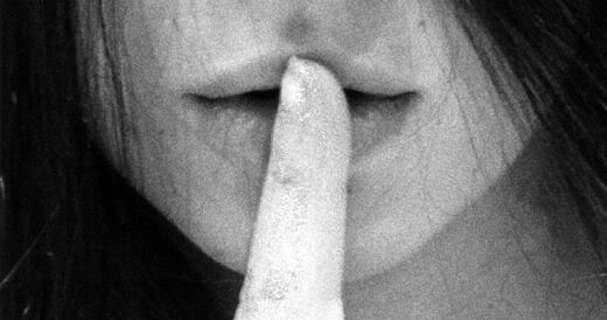The biggest hazards for venues of performing arts are not bad management, horrid programming, or really bad performances; it is fire! Take the Salle Favart, the official Théâtre de l’Opéra-Comique, as an example. The first Salle Favart was built to the designs of Jean-François Heurtier, and opened its doors on 28 April 1783. It was destroyed by fire on the night of 14/15 January 1838, and the second Salle Favart, built to the specifications of Théodore Charpentier, opened on 16 May 1840. This venerable building was destroyed by fire on 25 May 1887, and the third Salle Favart was built on the same site between 1893 and 1898.
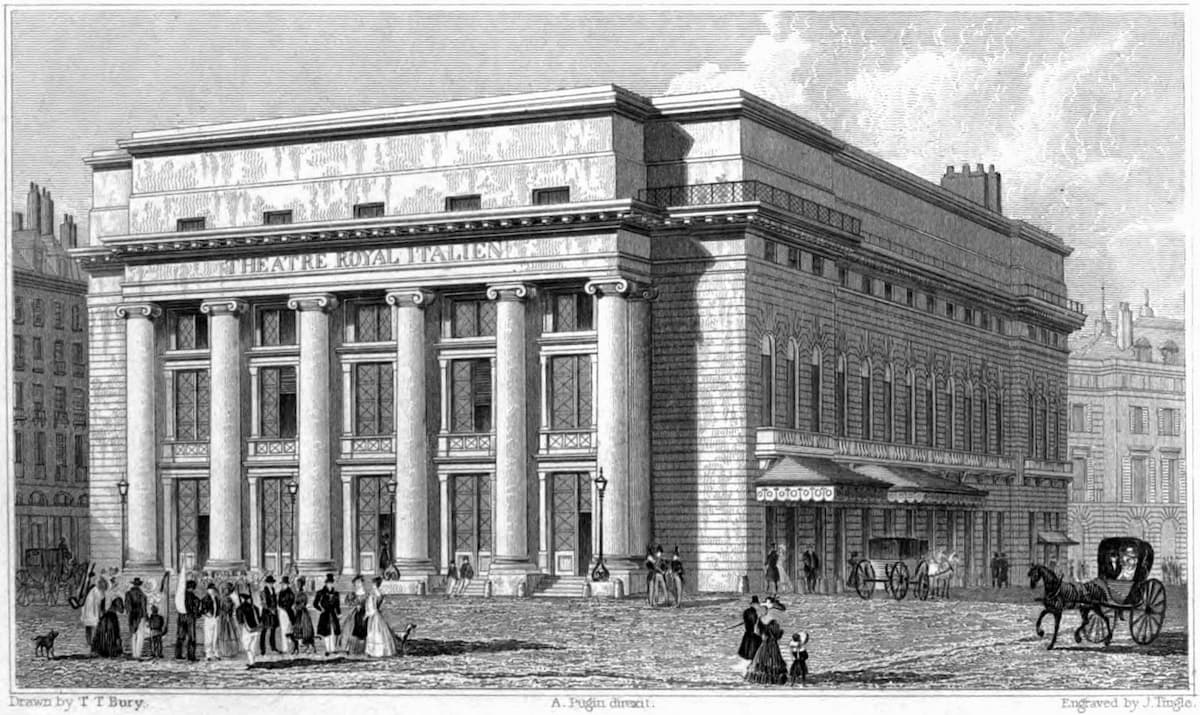
The first Salle Favart, built in 1783, destroyed by fire in 1838 © Wikipedia
Originally there had been much discussion, and a competition was held to ensure that the design would reflect official tastes. In the end, Louis Bernier, adapting the Charles Garnier design for the Opéra, was declared the winner.
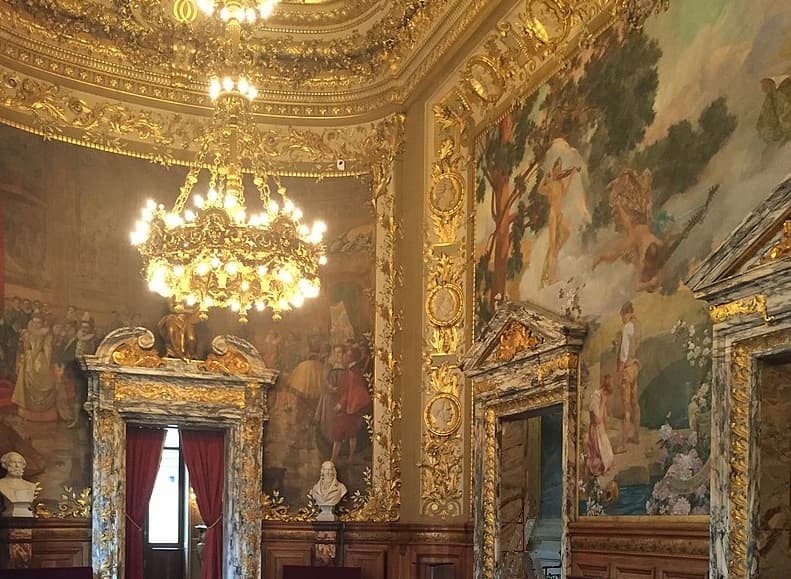
Salle Favart – Paris © Wikipedia
The Opéra-Comique, alongside the Opéra de Paris and the Comédie-Française is one of the oldest French dramatic and musical institutions, and the various reincarnations of the Salle Falvart saw significant premieres, including a substantial number of operas by André Grétry presented in the original theatre.
André Grétry: Richard Coeur-de-lion Act I
Opéra-Comique, as an opera company, was founded in 1714. Initially, they specialized in performances of the musical genre called “opéra comique.” This term loosely designates a type of musical theatre in which sung melodic lines are interspersed with spoken drama. That kind of musical entertainment had been around since the Middle Ages, but in the early 18th century, the company obtained the right to perform light comedies interspersed with song and dances while using sets and theatre machinery from the Opéra.
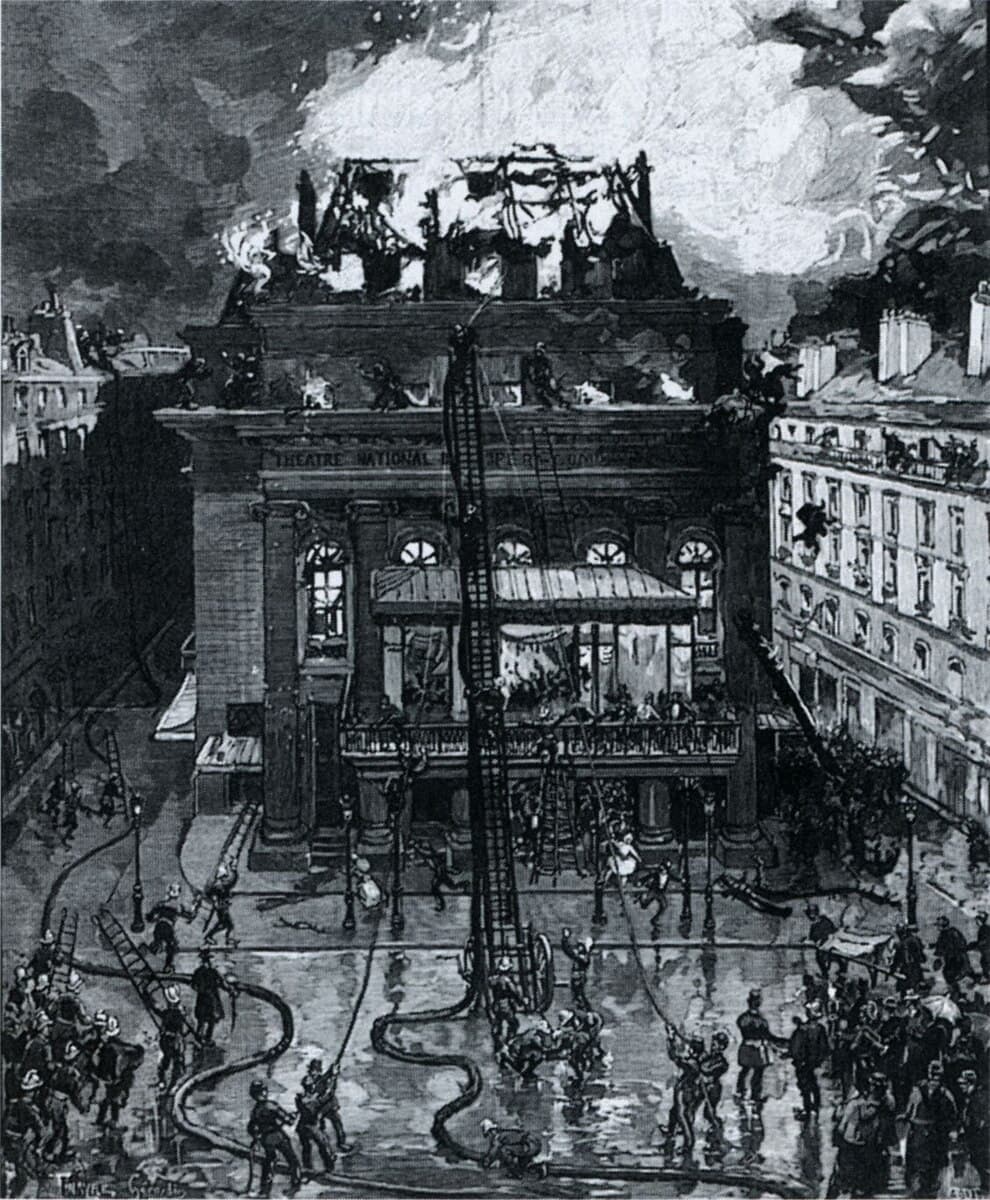
Fire at the second Salle Favart, Paris, 25 May 1887 © Wikipedia
Essentially a traveling opera company, the Opéra-Comique finally merged with the theatre outfit Comédie-Italienne, and it gave performances at the Hôtel de Bourgogne between1762 and 1783. The company was highly successful and soon raised enough funds to build its own theatre seating 1,255 patrons. Named in honor of the highly successful librettist Charles Simon Favart, the theatre opened under the patronage of Marie Antoinette and presented world premieres of works by Grétry, Méhul, and Boieldieu, amongst others. However, the pipe of the heating system caught fire and completely destroyed the building in 1838.
Georges Bizet: Carmen, Act II
Within two years, the second Salle Favart was built on the site of the first theatre. The auditorium was enlarged to seat 1,500 patrons, and the Opéra-Comique substantially expanded its repertoire and its hours of operations. Performances took place on most evenings of the week, and wealthy subscribers hired boxes on a yearly basis. The company was still violently opposed to the style practiced by Rossini and his followers, and its primary focus on French composers saw world premieres of Berlioz’s The Damnation of Faust, Offenbach’s Les Contes d’Hoffmann, Delibe’s Lakmé, Massenet’s Manon, and probably most famously, Bizet’s Carmen.

Opéra-comique in Paris © Wikipedia
In 1887, disaster struck again. Gas lighting above the stage during a performance set the hall ablaze resulting in the death of 84 people. The building was completely destroyed.
Claude Debussy: Pelléas et Mélisande (excerpt)
The third Salle Favart was completed in 1898 in Beaux-Arts architecture. It features a neo-Baroque façade and elaborate exterior and interior decorations. The horseshoe auditorium sports four galleries, and an iron framework reinforces the structure. Allegorical paintings decorate the foyers, and the decorators “managed to produce an interior of overbearing opulence, especially in the lavishly histrionic, gilt-dripping stuccowork of the auditorium.”
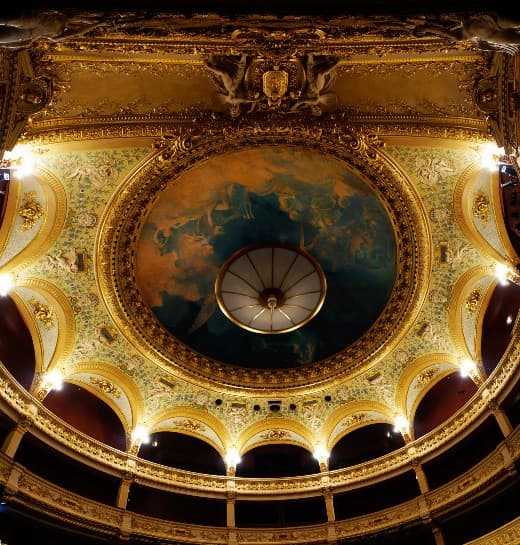
Théâtre national de l’Opéra-Comique – Yann Auger © Wikipedia
Not everybody, as you can tell, was happy with the traditional designs, but the premieres became more innovative. Amongst them we find Debussy’s Pelléas et Mélisande, Dukas’ Ariane et Barbe-bleue, and Ravel’s L’heure espagnole. And let’s not forget premieres by Rabaud, Leroux, and Milhaud.
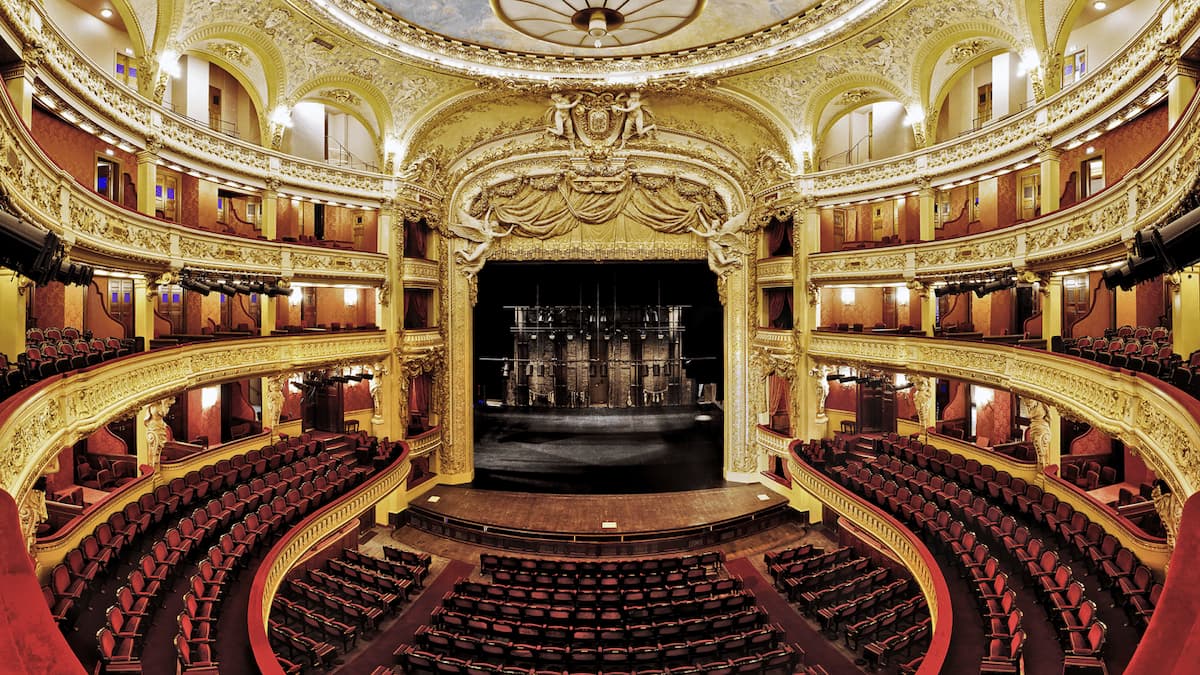
Salle Favart © Stefan Brion
Financial troubles forced the Opéra-Comique to join forces with the Opéra, and that collaboration saw the premiere of two works by Francis Poulenc. The opera company disbanded in 1972, but productions were once again staged at the third Salle Favart beginning in 1978. Just like its performing venues, the Opéra-Comique emerged anew from its ashes and regained autonomy. In 2015 the theatre was closed for major refurbishment, but by 2017 it had reopened in old splendor and glory. Let’s hope that all fire regulations have been strictly adhered to.
For more of the best in classical music, sign up for our E-Newsletter


